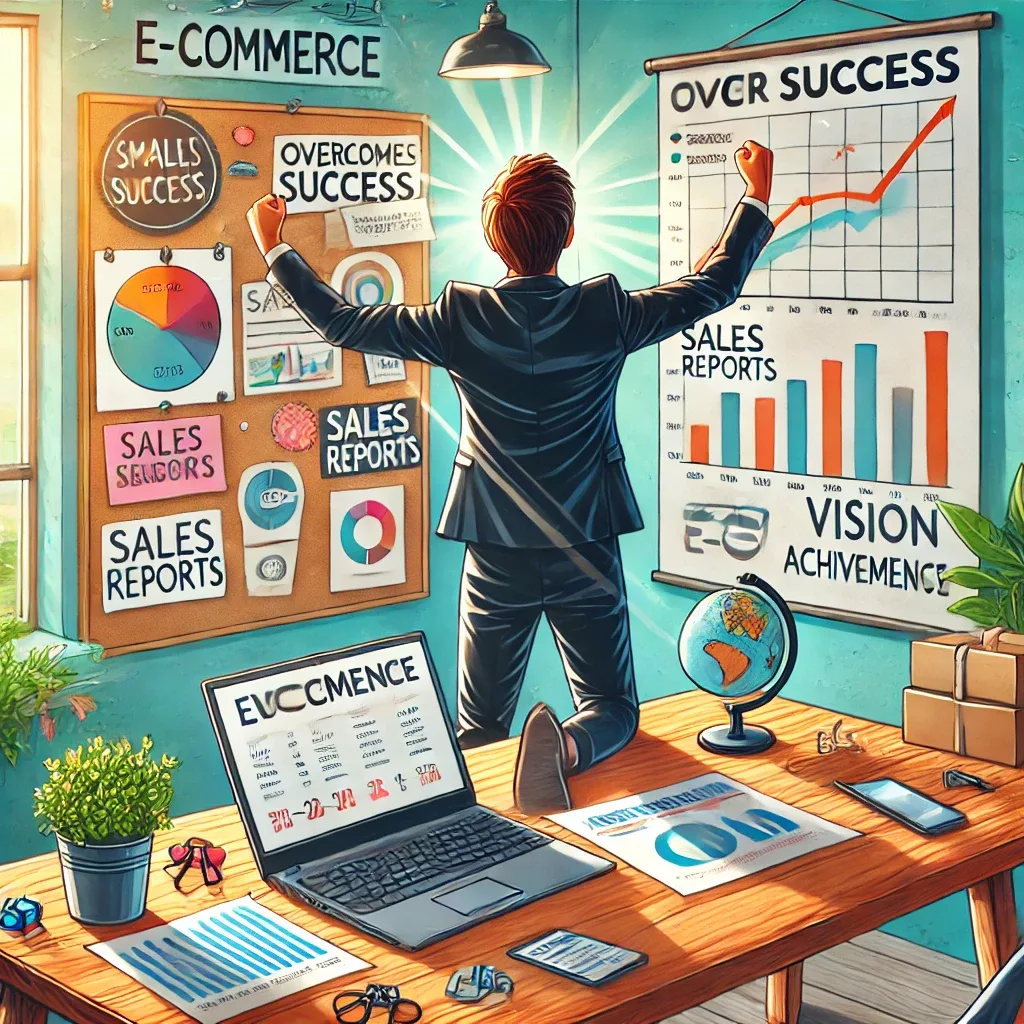Every entrepreneur faces challenges, but successful sellers know how to turn setbacks into comebacks. Whether it is a drop in sales, inventory issues, or marketing struggles, resilience plays a key role in overcoming obstacles and achieving long-term e-commerce success.
Thank you for reading this post, don't forget to subscribe!This article explores real seller stories, their biggest obstacles, and how they turned failure into growth. If you are facing difficulties in your online business, these insights will help you navigate challenges and move forward with confidence.
Exploring Turning Setbacks into Comebacks: Stories from Real Sellers in Depth
Many sellers have experienced business downturns but found ways to recover and grow stronger. The key is adapting, learning, and staying committed to your business goals. Here are some real examples of seller comebacks and lessons to apply to your own e-commerce journey.
1. Overcoming a Sales Slump and Finding New Strategies
One seller faced a significant decline in sales due to increased competition. Instead of giving up, they analyzed market trends and revamped their strategy.
How they bounced back:
- Introduced new marketing techniques, including social media ads and influencer partnerships
- Improved product listings and SEO to attract more customers
- Launched seasonal promotions and bundled offers to boost conversions
Learn how to optimize product listings for more sales to turn slow months into profitable seasons.
2. Recovering from a Supplier Failure
Another seller lost a key supplier, leading to delays in shipments and unhappy customers. Instead of closing their business, they diversified their supplier network and focused on customer communication.
What worked:
- Found multiple reliable suppliers to reduce dependency
- Kept customers updated on order delays to maintain trust
- Launched new product variations to attract a broader audience
Discover best practices for managing suppliers to avoid supply chain setbacks.
3. Rebuilding After Negative Customer Reviews
Bad reviews can impact business credibility, but handling criticism the right way helps sellers recover. One entrepreneur received a series of negative reviews, affecting sales and brand reputation.
Their comeback strategy:
- Improved customer service by responding to complaints quickly
- Offered discounts and incentives for returning buyers
- Encouraged happy customers to leave positive reviews
Learn how to manage customer feedback to maintain a strong brand reputation.
4. Adapting to Changing Market Trends
A seller specializing in fashion accessories noticed a decline in demand for their top products. Instead of shutting down, they researched current trends and pivoted their product line.
How they turned it around:
- Introduced trending items based on customer demand
- Adjusted pricing strategies to remain competitive
- Launched an email marketing campaign to re-engage past customers
Check out seasonal sales strategies to stay ahead of changing trends.
5. Bouncing Back from an Advertising Flop
Spending on ads that do not convert can drain resources. One seller invested heavily in paid ads but saw little return. Instead of quitting, they tested new approaches and refined their targeting.
Their solution:
- Focused on organic marketing through content and social media
- A/B tested different ad creatives to improve engagement
- Used retargeting ads to convert previous visitors
Learn how to run profitable ad campaigns to get better results.
Why Turning Setbacks into Comebacks: Stories from Real Sellers Matters and How to Make the Most of It
Many successful sellers have faced struggles, but their ability to adapt, learn, and improve led them to even greater success. Here are key lessons and strategies to help you turn setbacks into comebacks.
1. Learn from Every Failure
Every challenge presents an opportunity to grow. The most successful sellers analyze their failures and use them to refine their strategies.
How to learn from setbacks:
- Identify the root cause of the problem
- Test different solutions and track results
- Stay persistent and open to change
Explore mindset strategies for e-commerce success to stay resilient.
2. Build a Strong Customer Base
A loyal customer base provides stability, even during business struggles. Focusing on customer experience can help sellers recover faster.
Ways to build loyalty:
- Offer personalized experiences and exclusive deals
- Stay engaged through social media and email marketing
- Provide fast and reliable customer support
Check out customer retention strategies to keep your buyers coming back.
3. Stay Flexible and Adapt to Market Changes
The e-commerce landscape constantly evolves, and sellers who adapt quickly stay ahead.
How to stay flexible:
- Monitor industry trends and competitor strategies
- Test new marketing techniques
- Diversify sales channels and product offerings
Discover e-commerce trend forecasting to plan ahead.
4. Invest in the Right Tools
Using the right software and automation tools can make a big difference in recovering from setbacks.
Essential tools for sellers:
- SEO and analytics platforms to track performance
- Automated email marketing for re-engagement
- Customer service software for quick issue resolution
Find the best e-commerce tools to grow your business.
5. Surround Yourself with a Supportive Community
Being part of an entrepreneur community can provide guidance, motivation, and new ideas.
Ways to connect with other sellers:
- Join e-commerce forums and Facebook groups
- Attend business workshops and networking events
- Learn from successful seller interviews and case studies
Check out seller success communities for inspiration.
Final Thoughts
Setbacks are a part of every business journey, but learning how to adapt and overcome challenges leads to long-term success. By applying these real seller strategies, you can turn obstacles into opportunities and achieve e-commerce growth.
For more insights and expert seller advice, visit DubaiSouking today.


